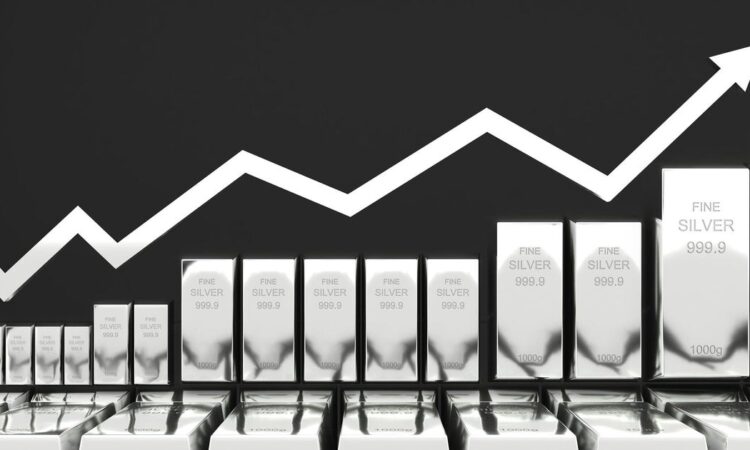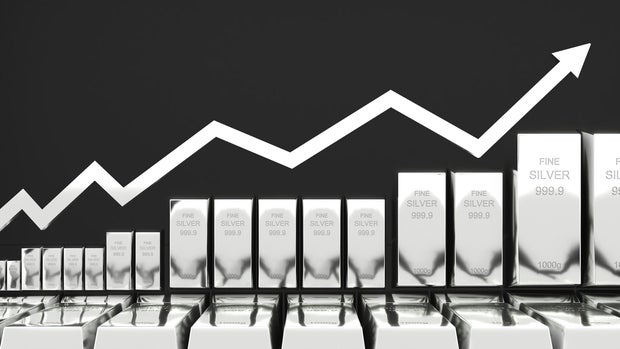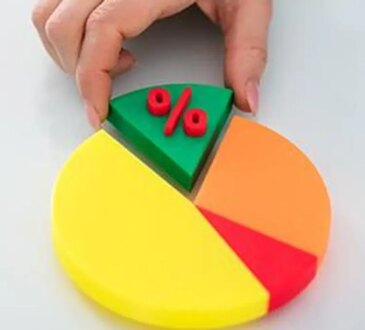
Getty Images/iStockphoto
Silver has been on a tear since the start of this year, with the price of silver sitting at just under $50 per ounce right now, up from about $29 per ounce just 10 months ago. This price rally has been fueled by a perfect storm of factors: major (and ongoing) supply deficits, surging industrial demand and safe-haven buying amid global economic uncertainty. For investors who want to buy silver or are currently sitting on silver holdings, this trend has led to an interesting question: Which silver investments can you actually turn into cash quickly?
The answer isn’t quite as simple as just selling your silver. In a market experiencing elevated demand, liquidity can vary dramatically depending on what form your silver takes. Some silver investing products practically sell themselves, with dealers and private buyers ready to snap them up immediately. Others might require more effort, negotiation or price concessions to find the right buyer.
But understanding which silver investments offer the best liquidity really matters in this landscape. With prices volatile and market conditions shifting, having the ability to exit your position quickly can mean the difference between capitalizing on a peak and watching it slip away. So, which silver products are moving fastest in today’s market? That’s what we’ll analyze below.
Find out how to add silver and other precious metals to your portfolio now.
What are the easiest silver investments to sell right now?
When you need to liquidate silver holdings quickly, your best bet is focusing on products with universal recognition, established track records and strong dealer demand. Here’s what could sell fastest in the current precious metals landscape:
Government-minted silver coins
Government-issued silver coins, such as American Silver Eagles, Canadian Silver Maple Leafs and Austrian Philharmonics, typically top the list for easy-to-sell silver. These government-issued coins carry sovereign backing, guaranteed purity (typically .999 fine silver) and instant recognition among dealers and collectors alike.
Because they’re produced by national mints with strict quality controls, buyers trust them immediately, too, meaning there’s no extensive testing required. Local coin shops, online dealers and even private buyers will typically offer competitive prices for these coins, often with same-day payment.
Compare your precious metal investing options and get started today.
Silver bars from reputable mints
Investment-grade silver bars, particularly those produced by well-known refineries like PAMP Suisse, Royal Canadian Mint or Engelhard, are another top pick for easy resale. One of the main selling points of silver bars is that they offer a straightforward way to trade larger quantities of silver.
Their purity (usually .999 fine) is clearly stamped, which speeds up the verification process. And, these bars also come with serial numbers, assay certificates and the reputation of refiners known for consistent quality. In other words, dealers are comfortable buying them because they know exactly what they’re getting, and the standardized weights make pricing straightforward.
That said, while silver bars typically trade closer to spot price than coins, lesser-known or generic bars may not sell as quickly or could require additional verification. So, sticking to recognized brands can make liquidation much smoother.
Popular silver rounds
Privately minted silver rounds can also be relatively easy to sell, especially if they are in good condition. While silver rounds lack legal tender status, which can make them slightly less liquid than government-issued coins, those with recognizable designs often have active resale markets through bullion dealers and online platforms.
For investors who bought rounds in bulk, selling them off in smaller lots can make the process quicker. And, in today’s environment, the lower premiums on silver rounds can attract buyers looking for cost-effective ways to add silver to their portfolios, which can increase the demand for this type of silver investment.
Exchange-traded funds (ETFs) backed by silver
If you’ve invested through a silver ETF, selling is typically as easy as placing a trade through your brokerage account. Because ETFs are traded on major stock exchanges, they offer instant liquidity during market hours. You won’t need to deal with physical shipping, authentication or finding a local buyer.
As a result, this type of silver investment can be a particularly attractive option if you want to lock in gains or adjust your exposure quickly without physically parting with silver bars or coins. Keep in mind, though, that selling silver ETFs doesn’t give you exposure to the potential premiums physical silver can command in high-demand markets.
Pre-1965 U.S. coins
Pre-1965 U.S. dimes, quarters and half dollars, which are commonly referred to as “junk silver,” contain 90% silver, but they can be surprisingly easy to sell, especially in bulk. These coins are often traded for their melt value, and because they’re widely recognized, many dealers and collectors are eager to buy them. They can also be appealing to small-scale buyers who want fractional amounts of silver without paying high premiums for modern fractional coins.
The premium over spot is usually modest, but the ease of sale compensates for this. And, with no numismatic value to debate (these are purely bullion plays), these transactions can often happen quickly and with minimal haggling.
The bottom line
Selling silver can be a straightforward and financially rewarding process right now if you hold the right type of investment. If you’re planning to sell, consider checking spot prices daily, comparing buyback rates from multiple reputable dealers and factoring in any shipping or transaction costs. With silver demand holding steady and economic uncertainty continuing to drive interest, now could be a good time to evaluate your holdings and make sure they’re in a format that’s just as easy to sell as it is to buy.





